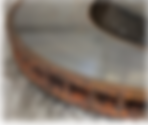Long Term Corrosion Protection (Aludur)


Background

In principle, all brake discs in the automotive industry are provided with corrosion protection. Common methods for corrosion protection include: Geometising, Zinc Dust Coating, Painting and UV Painting. The corrosion protection used today is short-lived in terms of durability. This means that after a relatively short period of use, the brake disc is more or less unprotected.
Issue

Corrosion on brake rotors can be dangerous because it can lead to decreased braking performance and increased stopping distances. The corrosion can cause the rotor surface to become uneven, which can make it more difficult for the brake pads to make contact with the rotor. This can lead to a decrease in friction, which is necessary for braking. Additionally, as corrosion can also cause the rotor to become thicker, it may cause the brake pads to wear out faster and can cause a decrease in braking efficiency.
Furthermore, corrosion on the brake rotors can also lead to increased brake noise and vibration. This can be both a safety concern and a nuisance to the driver. The noise and vibration can make it more difficult for the driver to accurately perceive the condition of the brakes, which can make it more difficult to safely operate the vehicle. Most critically, corrosion can also cause structural weakness in the rotor and make it more prone to cracking or failure. This can lead to unexpected and dangerous brake failure.
This is a particular issue with electric vehicles as they are much more likely to experience corrosion on their rotors due to:
-
Reduced heat generation: Electric vehicles typically generate less heat compared to internal combustion engine vehicles, which can help to prevent corrosion. As a result, the brake rotors in electric vehicles may be more exposed to the elements and more susceptible to corrosion.
-
Reduced use of brakes: Electric vehicles tend to have regenerative braking systems that convert the kinetic energy of the vehicle into electrical energy to recharge the battery. This can lead to less wear on the brake pads and rotors, which can increase the risk of corrosion due to lack of use. PEHV (Petroleum Electric Hybrid Vehicles) only use theirs brakes 70% as much as ICEs (Internal Combustion Engines) with this further reducing to just 2% with BEVs (Battery Electric Vehicles).
That is where we come in!
Solution

We are able to offer an 'Aludur' coating as a solution which is specifically developed to provide technical benefits for brake discs used by electric vehicles, including:
-
Corrosion protection, eliminating corrosion throughout the entire service life of the brake disc
-
Up to 50% wear reduction of the brake rotor
-
Increased comfort behaviour
-
No need for control systems to clean off the discs, which ensures a consistently good visual appearance of the disc
Corrosion Elimination
Our solution eliminates the corrosion behaviour of the brake disc at the friction surface, the ventilation channel and also the pot!
We tested this using a standard endurance test from Audi across 15,000km with our brake discs on the left hand side of the car and conventional discs on the right hand side. Following this test, it was clear to see how our disc showed no sign of corrosion at all while the conventional disc was heavily corroded as expected!




The Technical Part!
LTCP Coating
This is a technical process which involves first blasting the friction surfaces that needs to be coated. Next, the LTCP coating is applied either by arc wire spraying or dipping, depending on which individual surfaces are selected for coating. Finally, the disc receives heat treatment and the friction surfaces are machined.
During the coating process, all surfaces of the brake rotor, with the exception of the contact surfaces (Rim - Wheel hub) are coated. During the temperature process a diffusion of around 0.3mm takes place on all coated surfaces. This ensures that even difficult to access areas (E.g. ventilation channels) are coated.
To make an order or find our more please contact us directly!
Flat 11, 84 Elm Grove
Portsmouth
PO5 1LN
E-Mail: DAEnterprises1702@gmail.com